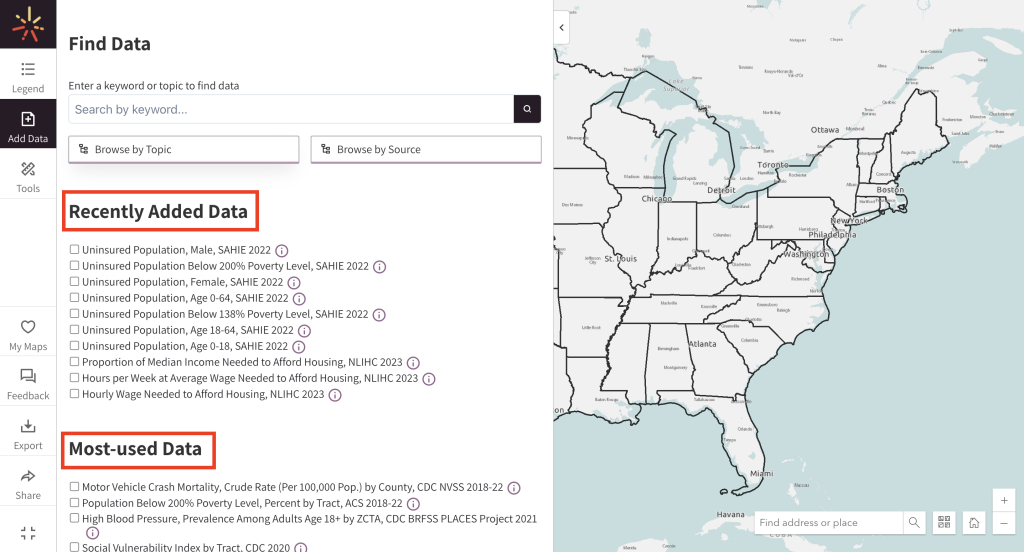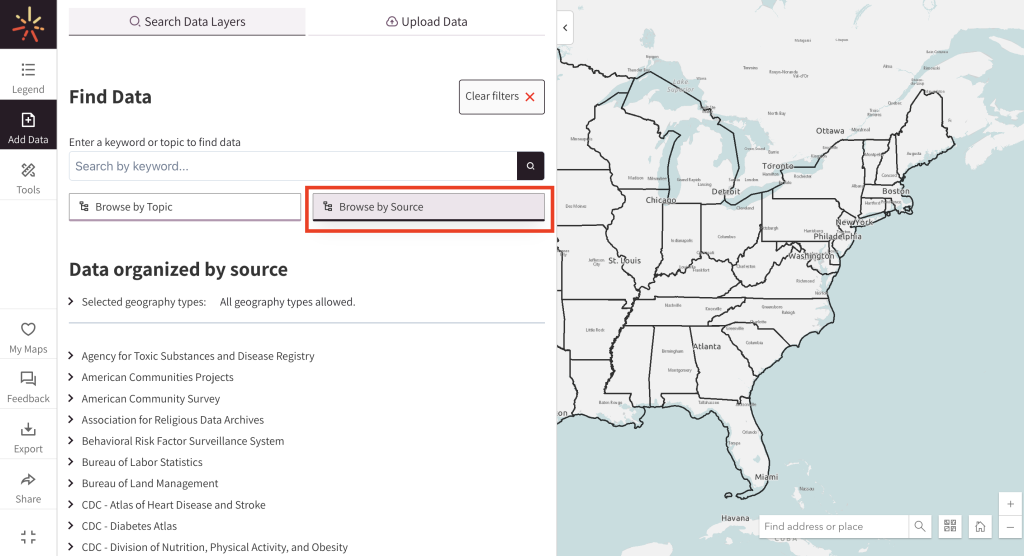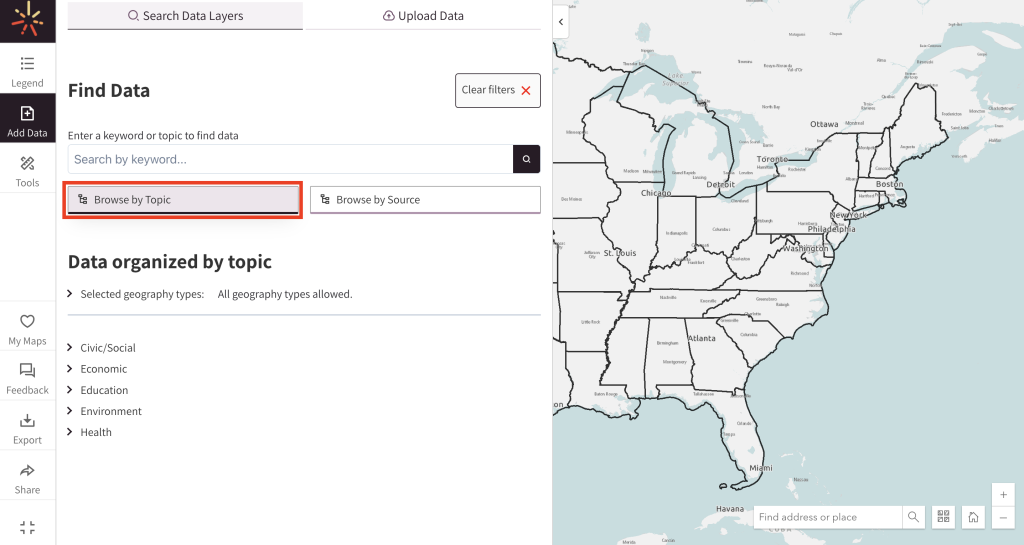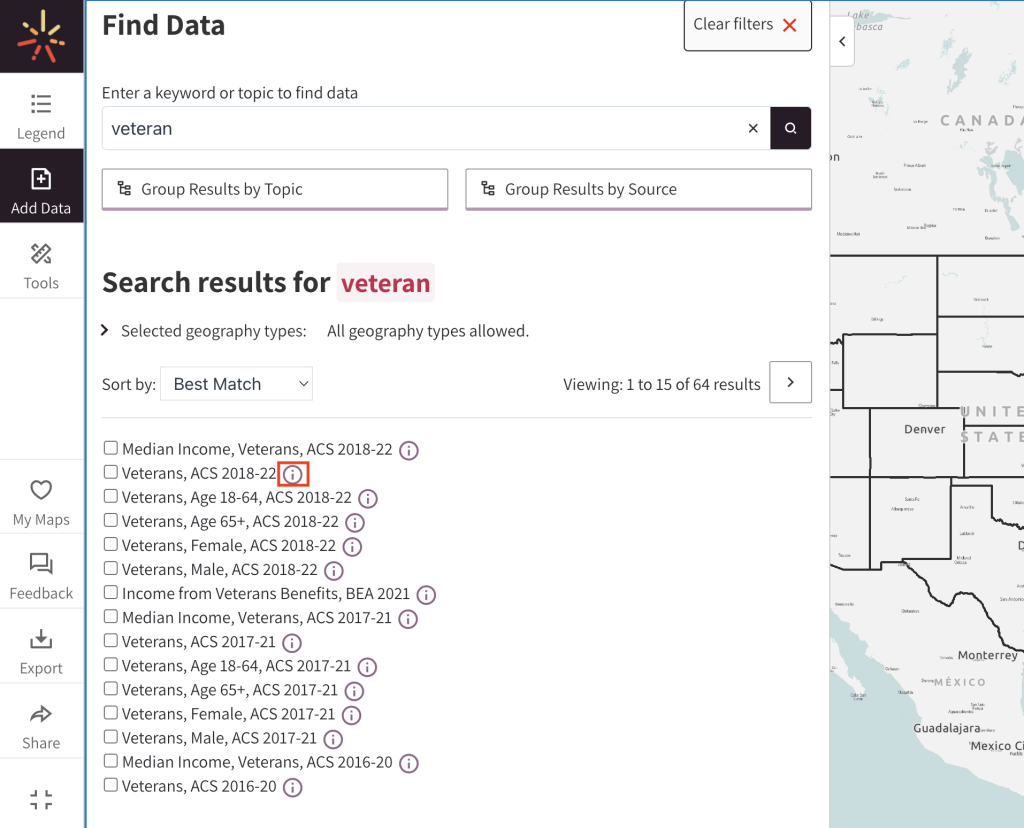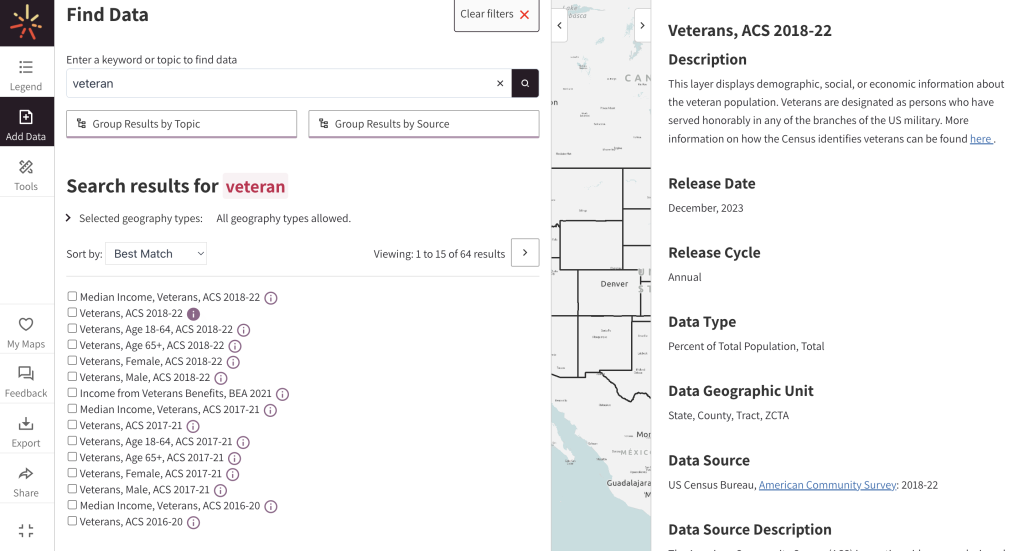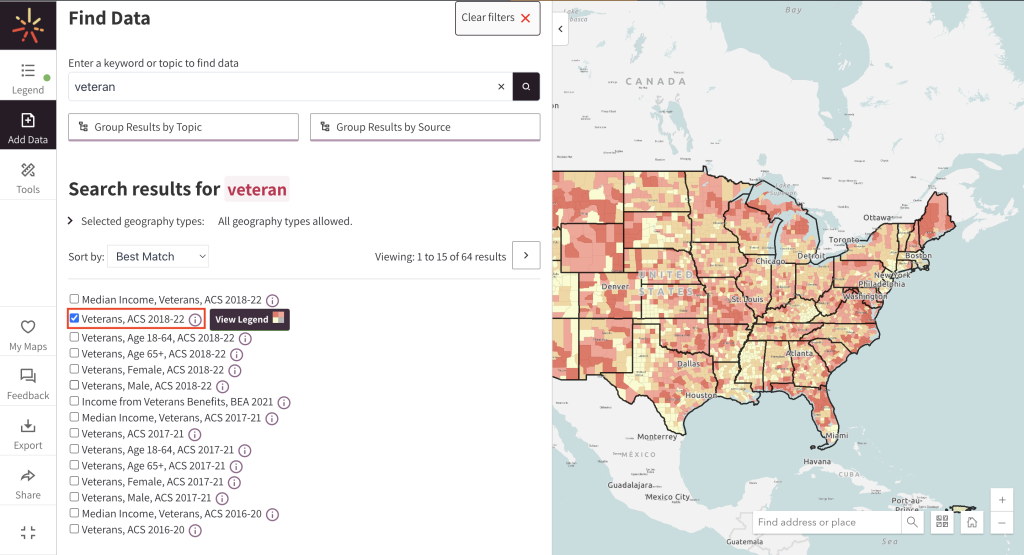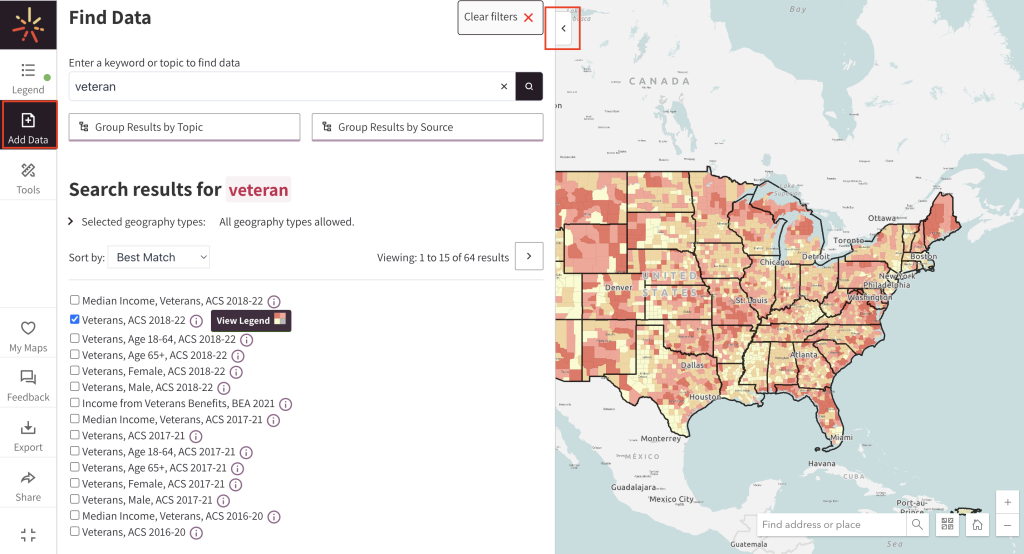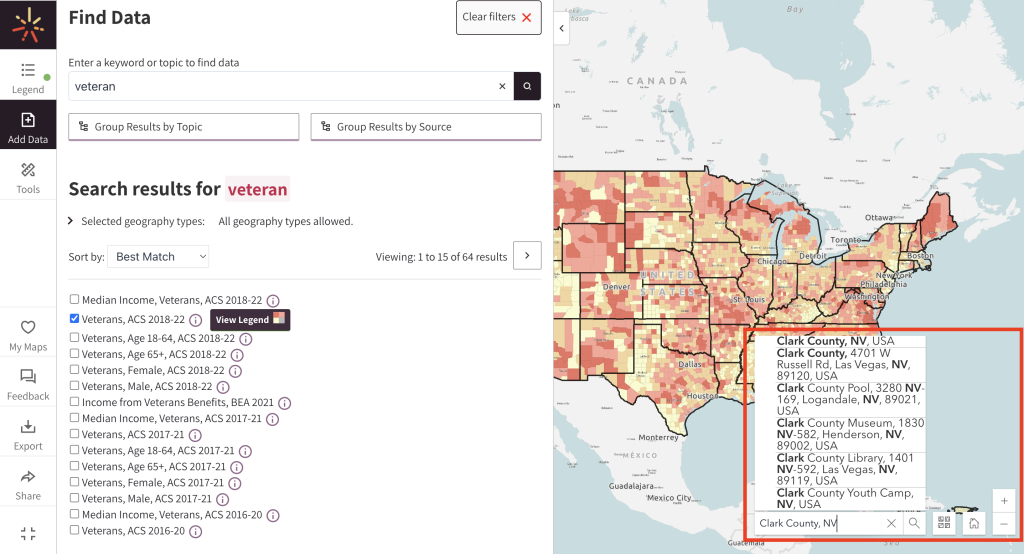How to Make A Map
Learn step-by-step how to make a map in SparkMap’s Map Room. All SparkMap visitors have access to the Map Room. Looking to upload your own data? Check out our Pro and Premium Subscriptions.
Search and Add Layers
Interact with Your Map
Share, Download, & Save
Step 1 – Search and Add Layers
Step 2 – Interact with Your Map
Once you’ve zoomed into your area of interest, it’s time to explore.
Click on any part of the map to view additional information about the map layer as it pertains to the location on which you clicked (Figure 10).
When available, explore your map layers’ geography options by clicking the “Geography” dropdown (Figure 13). Common map layer geographies include state, county, ZCTA, Census tract, Congressional district, house district, and school district-level.
Clicking each option will alter your map to show data according to your selected geography level.
If SparkMap collects multiple time periods for the map layer you’ve selected, see all time periods available by clicking the “Time Period” dropdown (Figure 15).
Clicking each option will alter your map in alignment with the selected time period.
If you are not already logged into your SparkMap account, you will be prompted to do so. Then the Manage Maps window will open. You will be prompted to add a title and description for your map.
Click the Save Map Button to save your map to your SparkMap account (Figure 17).

